What if I told you that the reason you brush your teeth every morning is not just because you want to keep them clean and healthy, but because of an advertising man named Claude Hopkins?
You see, back in the early 1900’s, only 7% of Americans had toothpaste in their homes, but a decade later an astounding 65% were brushing their teeth with the stuff.
What changed?
Well, back in the day, most people didn’t see the need for toothpaste. So when the legendary ad man Claude Hopkins was approached by the toothpaste maker Pepsodent, he was at first reluctant to take on the job. But he had a new idea that could make toothpaste sell, a cool trick up his sleeve.

First, they added a few ingredients to the toothpaste (like citric acid and menthol) that didn’t help clean teeth any better, but they did create a cool tingling sensation in the mouth after brushing. Then they created mass advertising that brought people’s attention onto the “film” covering their teeth, something that had never bothered anyone before.
This strategy caused Pepsodent sales to explode. It turns out that the desire for beautiful teeth wasn’t enough, it was the immediate reward of a physical sensation that cemented the habit of teeth brushing in millions of people.
(And also made Claude Hopkins a small fortune—we have a summary of his book Scientific Advertising and highly recommend it for anyone interested in marketing and sales.)
It’s fascinating how small changes can make such big differences! And that’s what “The Power of Habit” is all about. In this summary, you’ll discover the surprising science behind your daily routines and how you can tweak them for a better life.
Who is the author?
Charles Duhigg is a reporter for New Yorker Magazine, and before that for the New York Times. He’s won a Pulitzer prize and many other important awards. He was educated at Yale University and Harvard Business School. This book “The Power of Habit” spent over 120 weeks on the New York Times bestseller lists, essentially being THE go-to book about habits for many years. (Today the book Atomic Habits has taken that position.)
🧠 1. Habits Save Effort: How to change your life, one tiny step at a time, using brain science
Have you ever wondered how you can drive the same route to work every day, without really thinking about it, with your mind perhaps instead daydreaming of a beach somewhere? Enter the life-changing concept of habits.
What is a habit? A habit is a behavior pattern that is repeated regularly without really thinking about it.

Around 40% of what we do every day happens on autopilot, according to a 2006 Duke University paper. Like checking Instagram when we feel bored, or making that first cup of coffee after rolling out of bed.
Over 1,500 ago, the philosopher Aristotle was spot-on when he said, “We are what we repeatedly do. Excellence, then, is not an act, but a habit.” Truly, we shape our habits, and then our habits shape our days, and then our lives.
Why do we form habits? To help our brains save energy. Habits are like shortcuts for our brain. The more times that we repeat a habit, the more times that neural circuit fires, the easier it becomes to repeat that habit again in the future. That is true whether we’re going for a jog or lighting up a cigarette.
“Chunking” is the name for the brain’s process of forming an automatic routine. When we’re first learning something, like how to ride a bike, the brain’s logical part called the cerebrum is super active, but once the habit is formed our brain can take a mini-vacation. Then the most important player becomes our basal ganglia—one of the oldest and central parts of the brain. Researchers studied mice finding chocolate in a maze, and they could actually see brain activity decreasing as the mice repeated the same behavior a few times.
Tiny adjustments in our daily habit can become the cornerstone of a major life transformation. Take the story of James Clear, author of the mega-bestselling book “Atomic Habits.” During his high school years, a devastating baseball accident left him with serious injuries, ending his dreams of being an athlete.
However, during his recovery, James Clear began to realize the power of tiny, daily improvements. Instead of aiming for a massive change overnight, he embraced the satisfaction of achieving small milestones, that eventually led to a significant transformation. His major insight: “Changes that seem small and unimportant at first will compound into remarkable results if you’re willing to stick with them for years.”
To sum it up, habits are behaviors that we repeat regularly, often on autopilot without thinking. Our brains form habits as a shortcut to save energy. Habits can help us stick to behaviors, both good and bad, with less effort or self-discipline.
🔄 2. The Habit Loop: The secret to breaking bad habits and making new ones stick
What if I told you every single habit you follow can be broken down into 3 parts: Cue, Routine, and Reward? It’s an idea Charles Duhigg calls “The Habit Loop.” Knowing this can help you understand why you do what you do, and how to swap bad habits for better ones.
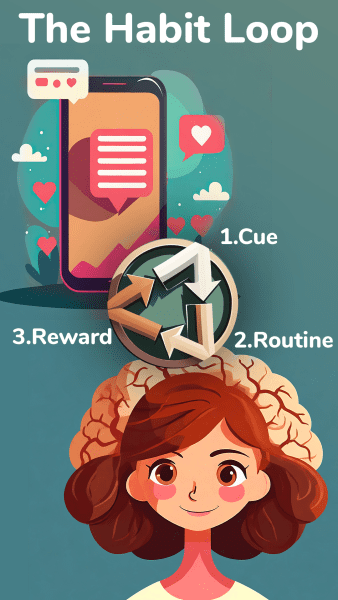
- Cue is the trigger that begins the habit loop. For example, feeling your phone vibrate in your pocket.
- 5 major types of cues: time, location, emotion, other people, or your last action.
- Routine is the action or behavior we do in reaction to the cue. Like pulling out our phone and tapping the notification.
- Reward is the benefit or positive sensation at the end. Like getting that little hit of dopamine after seeing someone liked our comment on social media.
There’s a final twist: Cravings drive habits. For a habit to truly stick, the brain must learn to associate a cue with a reward, creating a craving. You know that urge to check your phone when it beeps? That’s your brain already beginning to want the reward, like an itch you have to scratch. As you repeat a habit and experience the reward at the end, this craving grows, making some habits really tough to break.
(There’s a fascinating look at the psychology of gamblers near the end of The Power of Habit. When most people get a near miss at a slot machine in a casino, most people see it as losing money because that’s what just happened. But a habitual gambler gets a thrill from a near miss, their brain experiences it very similar to a win. That strongly reinforces the behavior, even while they’re losing money. For this reason, many slot machines are programmed to show way more near misses.)
Now, if you’re looking for some powerful positive habits to introduce into your life, then a great place to find inspiration is in The 5AM Club by Robin Sharma. That book shares The 20/20/20 Formula, a real game-changer for many people. The idea is to use the first hour after waking up—ideally at 5AM—and divide it into three 20-minute chunks.
The first 20 is for movement, getting the blood flowing. The second 20 is for reflection, maybe through meditation or journaling. The last 20 is for growth, which could mean reading or planning your day. This hour sets a positive tone for the rest of your day, ensuring you’re more focused, energized, and purpose-driven.
To wrap it up, The Habit Loop begins with a Cue or trigger, that may be a time, place, person, etc. Then we follow a Routine to attain a Reward—some pleasant sensation. Cravings drive habits, that neural connection between a cue and reward gets stronger the more we repeat the habit.
🔑 3. The Golden Rule: To change any habit, swap the routine, but keep the same cue and reward
Have you ever wondered why it’s so hard to break a bad habit? And even if we do change, it feels so easy to fall back into our old patterns? The truth is that old habits never really die. They cannot be directly eliminated, only replaced with something new.
This is Charles Duhigg’s Golden Rule of habit change: Swap the routine, while keeping the same cue and reward.

For example, every day Charles Duhigg had a ritual: a break with a cookie from the work cafeteria. The problem was that over time, this habit piled on the pounds. Rather than battling the urge head-on, he changed the routine.
Here’s how. Instead of heading to the cafeteria, he’d walk over to chat with a coworker. This new routine hit the spot, offering the reward he was actually after — not the cookie, but a break from work and a some stimulation.
In the same way, for any habit you want to eliminate, experiment with substitute routines, rather than trying to resist the urge directly. Here’s a formula to help you: “When I [feel craving], then I will [new routine], to experience [same reward].”
Writing down a plan can help us stick to our new habits, by anticipating inevitable obstacles that would derail us. For instance, a 1992 British study looked at elderly patients recovering from knee and hip replacements. These patients needed to start moving even while in pain to retain the flexibility of their joints. They found those who wrote down specific weekly action steps and milestones started walking twice as fast as others who did not. Their plans predicted problems and gave directions on how to handle them, like “When I feel pain, then I will rest 5 minutes and then continue.”
The key to reshaping habits is not in resisting the old through willpower or self-discipline. Rather, we should introduce a new routine in the same place, while keeping the cue and reward consistent.
🚀 4. Keystone Habits: The right small changes can cause a chain reaction of transformation in your life
If you’ve ever played dominoes, then you’ve seen how a small nudge in the right spot can set off a huge chain reaction of falling blocks. In the same way, success in our lives is often not about getting every single thing perfect, but identifying a few key leverage points, where small changes set off a remarkable cascade of positive change in our lives…
A keystone habit is a habit that sparks a chain reaction of other good habits in your life.
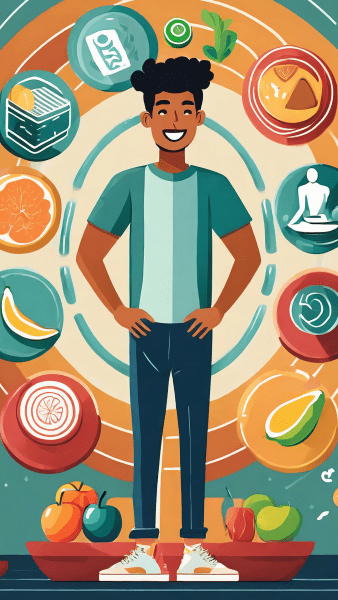
In The Power of Habit, Lisa Allen’s story is a stunning example. At 34, Lisa was facing a series of major challenges: addicted to smoking, overweight, in debt, a recent failed relationship. She decided to try a radical change—to make a difficult trek in Egypt. To prepare for this journey, she had to quit smoking.
This change triggered a ripple effect in Lisa’s life. She began jogging to increase her lung capacity, leading to weight loss. Fast forward 4 years, and Lisa was not just a non-smoker, but she was also 60 pounds lighter, had completed a marathon, secured a master’s degree, purchased a home, and pivoted her career into graphic design.
Here are some real-life examples of keystone habits in action:
- Personal change and weight loss. Research has shown one of the most effective ways to encourage weight loss isn’t through radical diets or exercise routines, but rather through a simple food diary. When people write down what they eat and review their entries, they increase awareness of their eating patterns. This naturally leads to them making small, incremental changes in their behaviors that are more sustainable in the long run.
- Management and leadership. Now let’s look at Alcoa, a giant aluminum company. When a new CEO named Paul O’Neill took over leadership, he decided to focus on worker safety, a cause everybody could get behind. Over the next decade, Alcoa’s net income increased by 5x! Why? By unifying the company efforts to improve safety, that naturally led to improvements in efficiency, too. It was a keystone habit at the level of an organization.
- Marketing and consumer behavior. A 1984 UCLA study found significant life events like a marriage or new baby are the times when our buying habits tend to change, providing key points of leverage for a clever marketer. Target noticed that if they could bring new moms into their store for one item, they would tend to buy everything else at the same time, due to being exhausted and time-limited. They began sending new or soon-to-be moms a lot of heavily targeted advertising about baby items. At first that led to some backlash, until Target learned to be more subtle about it.
A related concept is the metaphor of “Big Rocks” from Stephen Covey’s classic self help book, The 7 Habits of Highly Effective People. Imagine your time is a jar. You’ve got big rocks (major priorities), smaller stones (secondary tasks), sand and water (unimportant activities and distractions).
If you start by filling your jar with sand and water, there’s no space for the big rocks to fit. But if you begin with the big rocks, everything else can fit around them. Covey’s insight? Work on your most important priorities first or you’ll probably never get them done. His mantra: “Put first things first.”
Read more in our summary of The 7 Habits of Highly Effective People
In short, keystone habits have the power to transform multiple areas of our lives, leading to a chain reaction of good habits and success.
👣 5. Small Wins: Giving you the power of believing you can change
Have you ever started a diet or tried to quit a bad habit, but then you slipped up and thought, “why even bother?” Setbacks like that can make us feel like giving up altogether. But here’s a more hopeful perspective: every tiny success, every small step forward matters.
When we start changing our habits, small wins matter a lot. They act as proof, showing us we can change. However, transformation is not always a straight path, though. It’s often a messy process, filled with trial and error.

Think about smokers, for example. Most don’t just wake up one day and quit cold turkey. On average, they have to fail and restart seven times before finally ditching cigarettes. It’s a journey of discovering what hacks and methods work best for them.
Now, let’s pivot a bit. There’s a similar belief concept in programs like Alcoholics Anonymous. They emphasize faith in a higher power. But Duhigg argues it’s less about religious faith and more about trust—a trust in something larger than our shortcomings. This trust, oddly enough, becomes the confidence in our own power to change.
Taking it deeper, Carol Dweck, a renowned psychologist from Stanford University, talks about two different ways people think about their abilities: “fixed” and “growth” mindsets. If you have a fixed mindset, you think you’re born with certain abilities and can’t change them. But if you adopt a growth mindset, you believe you can get better at something with practice and hard work. This way of thinking helps us love learning and be resilient in the face of challenges.
As Dweck puts it, “In a growth mindset, challenges are exciting rather than threatening. So rather than thinking, oh, I’m going to reveal my weaknesses, you say, wow, here’s a chance to grow.”
Learn more in the book Mindset by Carol Dweck
The journey to change starts with small wins, reinforcing the belief we can change. In the beginning, this often looks like a series of mini-experiments, as we learn what methods work for us personally.
💪 6. Willpower: The muscle you can strengthen, that supercharges every other habit
Have you ever hit a wall in the afternoon and thought, “Why do I keep procrastinating?” or “Why can’t I just push through and finish this work?” Well, the answer lies in understanding willpower.
In The Power of Habit, Charles Duhigg describes willpower as our ability to exert self-control, make decisions, and delay gratification. It’s a critical keystone habit because willpower is what gives us the power to adopt other habits and make life changes.

Some key points:
- Willpower can be strengthened. Like a muscle can be made stronger by working out at the gym, our willpower can be made stronger with practice. This is great news! And it’s the opposite of what most people mistakenly believe: that we are born with a certain level of self-control and can’t change it.
- Willpower can spill over from one area of our lives into other areas, according to a 2006 Australian study. That’s one of the biggest benefits of kids signing up to activities like music lessons or sports. It’s not just about playing the piano, but learning the core skill of self-regulation.
- Willpower gets depleted over the course of a day, especially when we do hard things and make decisions. In a study by Muraven and Baumeister, participants who resisted freshly baked cookies in favor of radishes later gave up more quickly on a challenging puzzle.
The practical takeaways is that our willpower is a limited daily resource. That means we must guard it from being depleted on the wrong activities, so we can more effectively accomplish the hard tasks we really want to.
Some ways to do this:
- Create a process. Starbucks created a LATTE method for employees to follow when handling an upset customer. LATTE is an acronym that means: Listen, acknowledge, take action, thank them, explain why the mistake happened. Being able to follow this step-by-step process helped Starbucks employees save their willpower to remain friendly and smiling during the rest of their work shifts.
- Write down the next action beforehand. In the book Getting Things Done by Dave Allen, he recommends writing down a “next action step” for each major project we have. This helps us avoid procrastination, because we don’t need to spend our precious willpower deciding what we should do.
- Reduce impulsive distractions. In the book Deep Work by Cal Newport, the computer science professor and bestselling author echoes the idea that willpower can be strengthened. He says we can increase our ability to focus on mentally demanding work by eliminating impulsive distractions, like deleting social media apps from our phones and checking email far less often at scheduled times.
Think of willpower as a muscle—it can be practiced and strengthened with the right strategies, such as learning a new musical instrument or language. Paradoxically, we must also guard our willpower for the right things, because our “self-control muscle” gets depleted over the course of the day.
👥 7. The Power of Community: How groups we belong to shape our habits
In school, most of us learned about the power of “peer pressure.” When others around us are doing something, we feel a magnetic pull to do the same thing, such as drinking or smoking.
Well, the influence of those around us isn’t always negative—it can also be a strong positive force. Imagine trying to quit a bad habit alone versus being surrounded by people all working towards the same goal. Alcoholics Anonymous, Weight Watchers, and even regular gyms rely on this principle. We walk inside, see everyone else working out, and feel motivated to push ourselves harder, too.
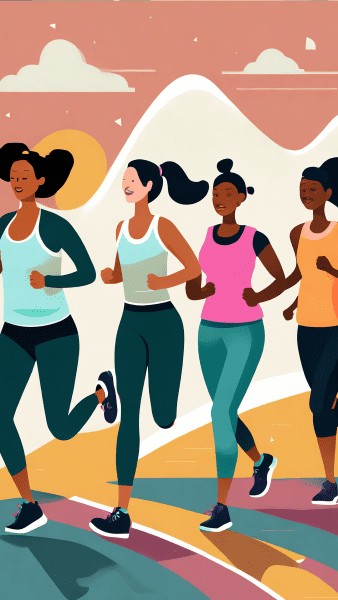
- In our personal lives, this idea has an obvious practical application: we should try to surround ourselves with people who resemble the person we desire to be. Joining a community that helps us adopt a certain identity can often be the strongest way to create a transformation in our lives.
When we see ourselves as a “jogger” and regularly have lunch with other “joggers” then it becomes easier to put on our running shoes even when we don’t really feel like it. People generally want to behave in a way that aligns with the identity they have inside—of the kind of person they are. - Organizations can also leverage this idea. Rick Warren’s Saddleback Church grew quickly because they organized members to gather in small groups outside of church, supercharging their feeling of belonging.
- Finally, larger social movements also rely on community ties. Why did Rosa Parks’ arrest on a bus spark the civil rights movement, when many similar past arrests didn’t? She had strong social ties to the community, people who came out to support her, and then weaker social ties kept the movement growing.
This phenomenon is called “social proof” by Dr. Robert Cialdini in his mind-blowing book “Influence: The Psychology of Persuasion.” Social Proof is our psychological tendency to believe something is right to do if we see many other people doing it.
For example, when people are looking to read a new book, what do they do? They often make a snap judgment based a quick look at Amazon, glancing at the number of reviews and the average rating. This is a type of mental shortcut we use to make decision better, and often it serves us well. But a problem is that social proof can often be hijacked by bad actors. Like, a person could buy hundreds of fake reviews to boost their book sales. That makes it valuable to understand how our psychological shortcuts work.
In short, don’t underestimate the influence of those around you. The social groups and communities you’re a part of can make or break your habits.
- Break down your bad habits into cue-routine-reward. Keeping a daily journal may be useful for this. For each habit you want to eliminate, try to identify the cue that triggers it and the payoff at the end.
- Experiment with 3 different new routines. What routine or behavior could you do instead of a bad habit you have, while keeping the cue and reward the same? It often takes trial and error to find a new routine that scratches the same itch, so don’t despair.
- Start with a simple keystone habit. Like making your bed first thing every morning or making sure you’re drinking a big bottle of water every day.
- Complete your “big rocks” first. Schedule your more challenging tasks for times when your willpower is at its peak, typically in the morning.
- Share your habit goals with friends or a family member and ask them to join you, leveraging the power of peer pressure.


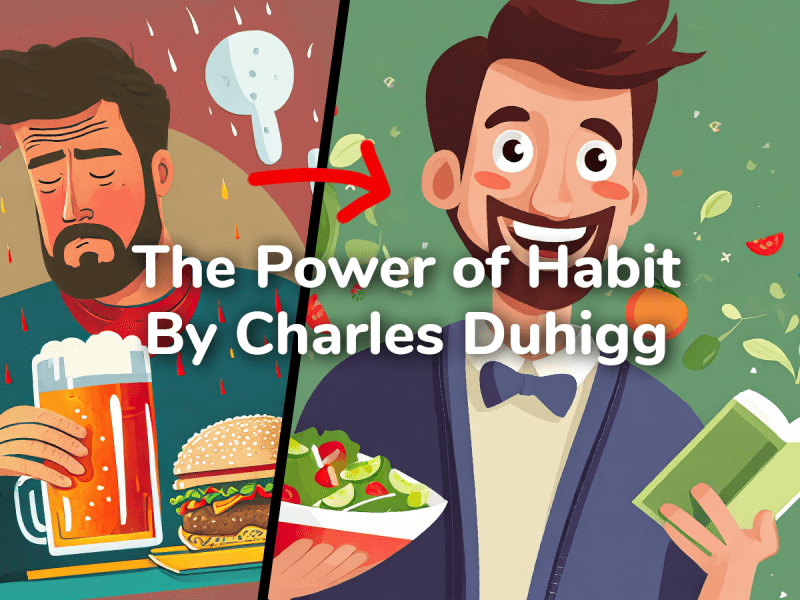
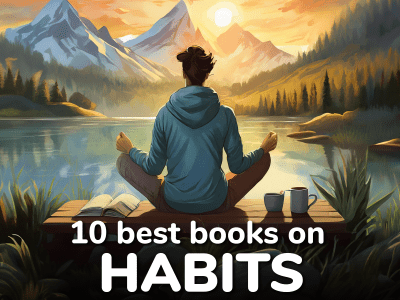
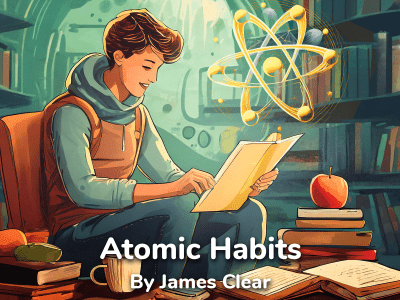
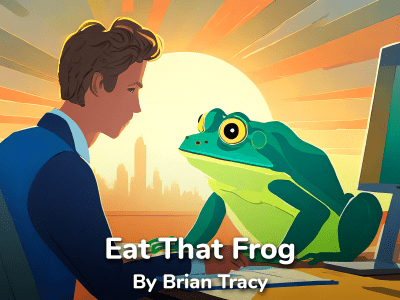

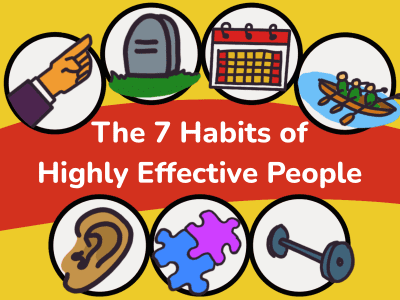

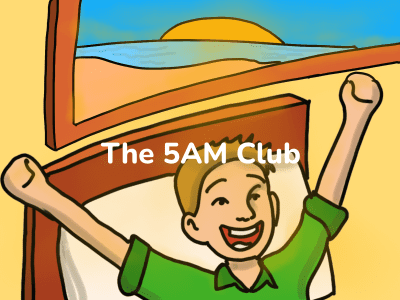


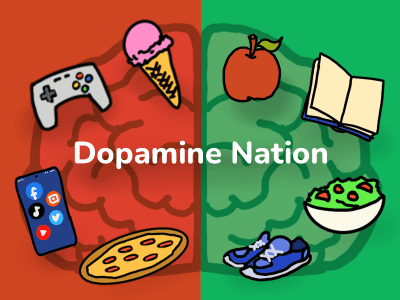







Community Notes